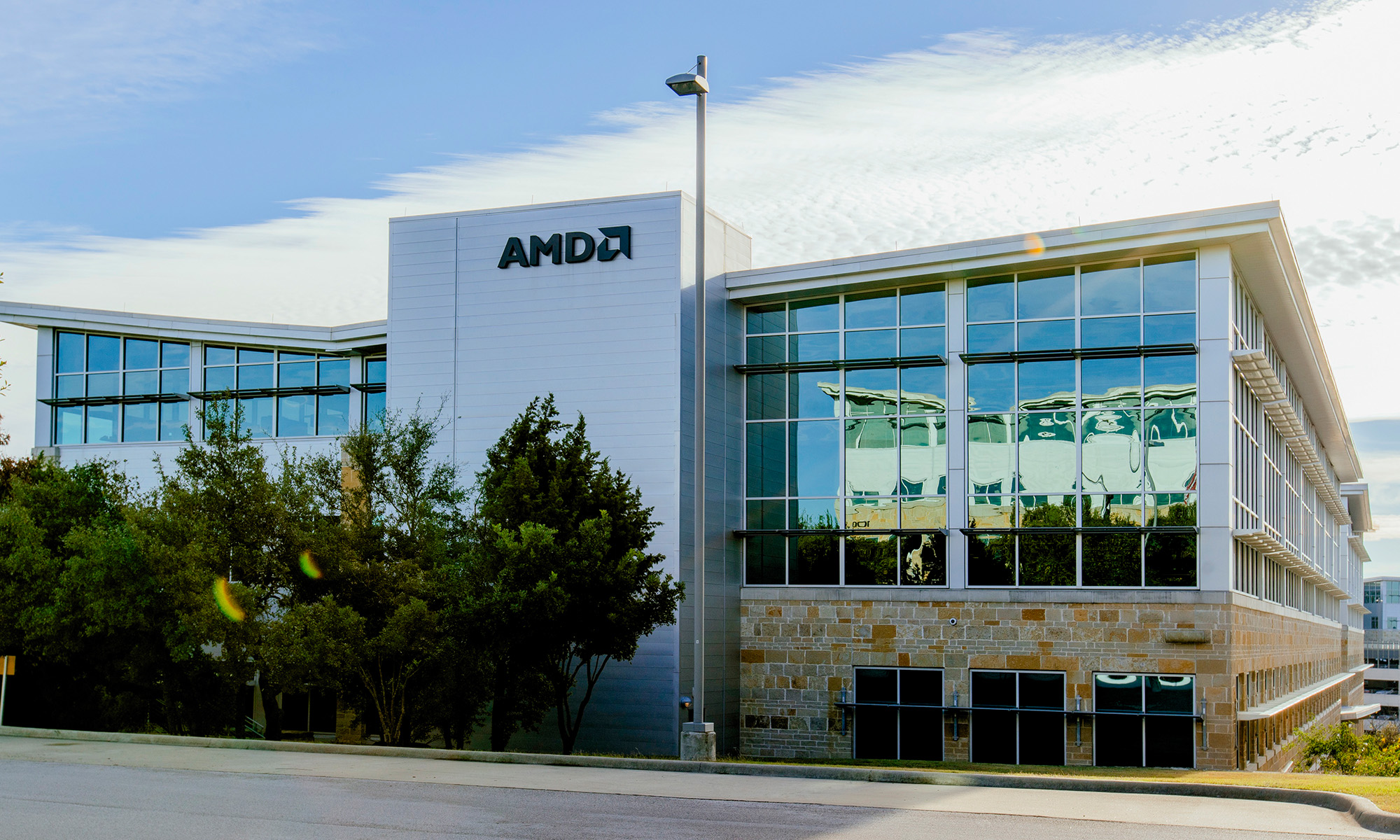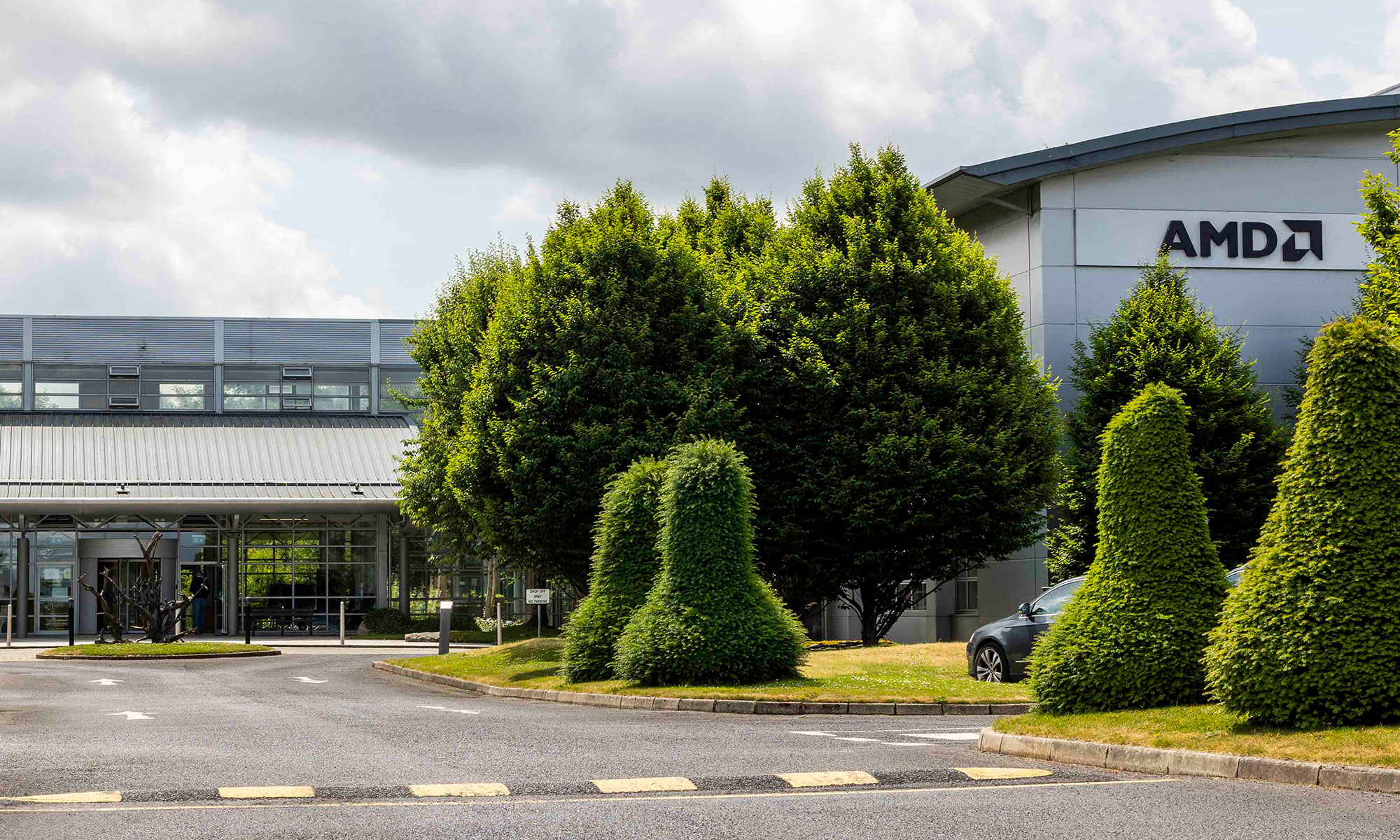AMD (AMD +1.93%), which rallied nearly 140% over the past 12 months, is a highly divisive stock among tech investors. The bulls believe that AMD's new x86 Ryzen CPUs and upcoming Vega GPUs can strike critical blows against Intel (INTC 0.82%) and NVIDIA (NVDA +2.06%) in their respective markets. The bears meanwhile note that AMD repeatedly failed to beat both bigger chipmakers in the past, and that too much of its future relies on the Ryzen and Vega's success. While I'm not bearish on AMD, I believe that investors should still worry about several major headwinds facing the company.

Image source: AMD.
The ongoing battle with NVIDIA
AMD stole the spotlight from NVIDIA last June by launching the RX 480, which was the cheapest "VR ready" card on the market at $200. But over the next few months, NVIDIA struck back across the low-end market with the GTX 1050 ($109), GTX 1050 Ti ($139), and the GT 1030 ($80).
The GTX 1050 Ti was approved by Oculus last October, making it the cheapest VR ready card on the market. AMD responded by lowering the price of its VR-ready RX 470 from $179 to $169, but that low-end card still remained pricier than the GTX 1050 Ti.
AMD's next big push against NVIDIA will be the launch of its next-gen Vega cards this summer, which could overtake NVIDIA's current-gen Pascal cards in terms of raw graphical horsepower. However, it's unclear how long that lead will last, since NVIDIA will likely launch its next-gen Volta GPUs for mainstream consumers in early 2018. This upcoming clash could follow the same cycle as the low-end GPU battle last year, with AMD winning the initial benchmarks but provoking a fierce retaliation from NVIDIA.
Other potential pain points...
The two major gaming consoles -- the PS4 and Xbox One -- are both powered by AMD SoCs. The revenue from those consoles is the core pillar of growth for AMD's EESC (Enterprise, Embedded, and Semi-Custom) unit.
However, NVIDIA's Tegra chip now powers the Nintendo (NTDOY +2.18%) Switch, which has been stealing the spotlight from the PS4 and Xbox One with its hybrid design and well-received launch titles. The Switch's success shows that NVIDIA's Tegra has the graphical muscle for hybrid devices, which bodes well for its future in other smaller devices -- like AR/VR headsets, set-top boxes, gaming tablets, or other handheld devices.

Image source: Nintendo.
When NVIDIA's graphics licensing deal with Intel expired earlier this year, NVIDIA stopped receiving $66 million in "free" revenue per quarter. Earlier this month, rumors suggested that Intel would sign a graphics deal with AMD to replace that deal and give AMD a much-needed injection of "free" revenue. However, Intel later claimed that report was false.
The upcoming battle with Intel
AMD's new Ryzen chip recently impressed investors when initial benchmarks showed that the top-tier Ryzen 7 1800X matches Intel's 8-core Core i7-6900K in single-threaded performance, and beats it in multi-threaded performance -- for half the price. But here's the catch -- the 14nm Ryzen is considered a next-gen chip for AMD, while the Core i7 in the comparison is Intel's current-gen 14nm Kaby Lake chip.
AMD also plans to loosen Intel's iron grip on the data center market with Naples, a high-end Zen processor that has more cores than Intel's current-gen Skylake-based Purley CPU. But once again, this is technically a next-gen to current-gen comparison.
Intel isn't sitting idly by and letting itself get overtaken by AMD. On the PC front, it plans to launch its newer Coffee Lake (14nm) and next-gen Cannonlake (10nm) chips near the end of 2017. On the server front, Intell could soon release an updated version of Purley which boasts just as many cores (32) as Naples.
Why AMD remains a speculative stock
The problem with AMD is that it needs its next-gen chips to gain enough traction against NVIDIA and Intel before those bigger rivals strike back with potentially faster chips.
If you're a PC owner who wants to upgrade an aging desktop PC, you're likely wondering if you should buy AMD's Ryzen and Vega chips this year, or wait and buy Intel's Cannonlake CPUs and NVIDIA's Volta GPUs instead. Big companies will likely want to see comparisons between Naples and the new Purley chips before authorizing any sweeping upgrades.
I'm not saying that AMD is a bad buy at current levels -- it's actually fairly cheap at 2.2 times sales (relative to the industry average of 4 for semiconductor makers). But investors would be foolish not to worry, since AMD's future depends heavily on NVIDIA and Intel's new chips falling short of market expectations.








